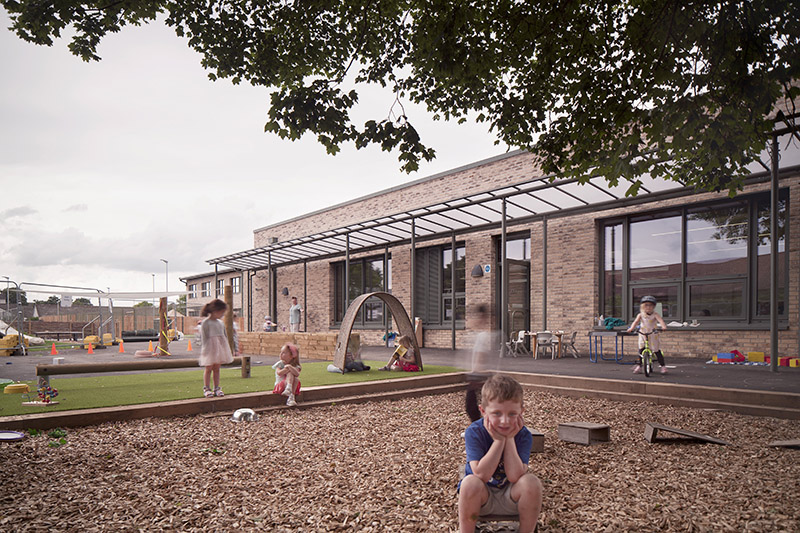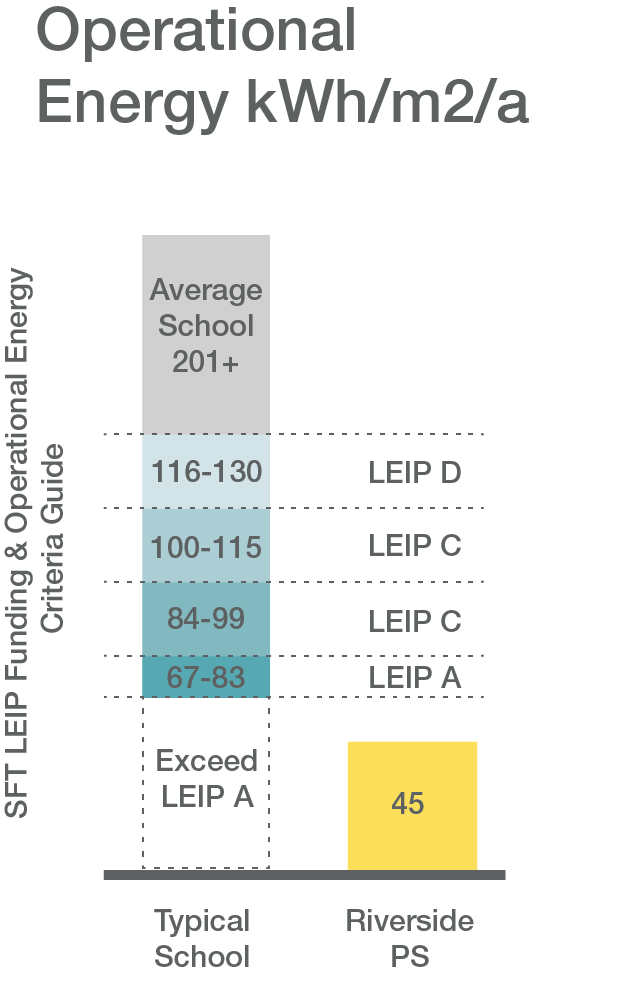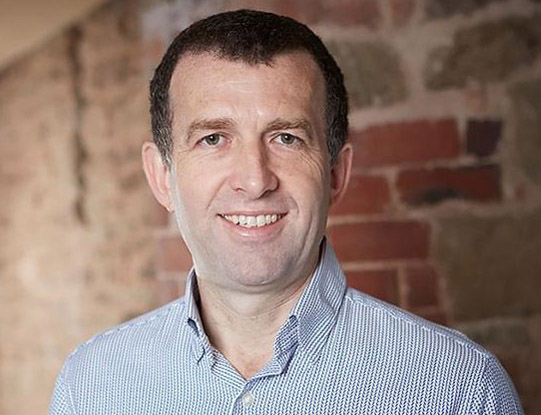
Edinburgh-based architect Architype is working on a number of Passivhaus schools, including the recently completed Riverside Primary, the first Passivhaus certified school in Scotland. Jonathan Hines, MD of Architype and vice-chair of Passivhaus Trust, shares monitoring data from the school’s first year, demonstrating that the school is more than delivering on energy and indoor comfort.
PERTH & Kinross Council’s Riverside Primary School is the first Passivhaus certified school in Scotland and is in the vanguard of up to 35 other Passivhaus schools in the pipeline in Scotland. The school’s first year monitoring data is now in, and the results have revealed actual energy operational performance to be significantly below Scottish Futures Trust LEIP requirements, while consistently providing excellent comfort levels.
No performance gap
One of the original motivations for developing the Passivhaus standard in the 1990s was to close the large gap between how buildings were designed to perform and how they perform once occupied. At the time, and unfortunately still today, many buildings already had insulation and good glazing but failed to perform as expected. Passivhaus offers an integrated approach encompassing the principles of detailed performance and comfort criteria, accurate modelling, and quality assurance. This means that Passivhaus buildings, unlike most UK new build, reliably perform as designed, avoiding the ‘performance gap’.
The performance gap between design and in-use energy performance in the UK is well-documented and, conservatively, is found to result in a 60% increase in space heating demand in residential and often considerably more in non-residential buildings. Passivhaus buildings, by contrast, are reliably found to perform as designed on average. The clear targets, the stringent quality assurance process of Passivhaus certification, and the accuracy of modelling in PHPP are contributing factors towards these consistently successful outcomes.
De-risking funding
Delivering buildings without the performance gap is one of Passivhaus’ superpowers! This is the main driver for Scottish schools to adopt Passivhaus at scale, thanks to a funding mechanism developed by the Scottish Futures Trust’s Learning Estate Investment Programme (LEIP). Local authorities are required to pay upfront for the delivery of new schools, with the Scottish Government providing funding through the Scottish Futures Trust (SFT) on an outcomes-based funding approach over 25 years. Projects receiving funding need to meet a clear delivered energy target of 67-83kWh/m2/yr for core hour/facilities, and the outcome is monitored at set intervals. Where the energy target is not achieved in full, funding is reduced correspondingly. The SFT’s outcomes-based approach for new schools has seen councils embrace Passivhaus to help meet energy targets and de-risk funding. And so overnight, we have gone from zero Passivhaus schools in Scotland to nearly 35 completed, under design and in construction.
Riverside Primary School
Riverside Primary School was part of Perth & Kinross Council’s capital programme of school upgrades and improvements through hub East Central Scotland. Architype was the Architect and Passivhaus designer on the project, working alongside Robertson Group as principal contractor.
Completed in 2023 and Passivhaus certified in 2024, the school offers a fantastic demonstration of why building schools to the Passivhaus standard makes so much sense. The monitoring data from Riverside’s first year demonstrates exceptional in-use performance results. With an energy assessment of just 45 kWh/sqm/annum, Riverside Primary School is significantly below the target figure of 67kWh/m2/annum required for LEIP funding. Second year data is showing an even lower figure of 35 kWh/sqm/annum, thanks to the school optimising building controls.
Indoor air quality monitoring and internal temperature monitoring have also shown fantastic results for the school, also outperforming the performance data for typical schools. During a particularly hot weather period in September 2024 with an external peak temperature of almost 28C, Riverside’s average building temperature internally was 22C, demonstrating the resilience of Passivhaus design for overheating and future climate resilience.
Another benefit has been that of grid resilience. After year one of monitoring, the school was found to be utilising only 31% of its substation kVa capacity, and so the client can reduce the standing charges on the incoming energy for the school, saving thousands of pounds on standing charges alone. This is critical when electricity is still much more expensive than gas, at a ratio of 1:4.5 presently.
Riverside Primary School goes way beyond minimum building requirements to provide quality assured comfort and performance over the building’s life, providing a beautiful and exciting school for the community, as well as being a catalyst for educational change across Scotland.

Scottish Passivhaus Equivalent
To achieve Passivhaus certification, Riverside Primary School needed to undergo a rigorous quality assurance compliance process to ensure the targets would be met. As Scotland gears up for its next Scottish Passivhaus Equivalent policy consultation, we would expect that policymakers ensure that the quality assurance aspects of the Passivhaus standard are not watered down. I have been attending a Scottish Building Standard working group on behalf of the Passivhaus Trust, and we have been encouraged to see cross-industry consensus emerging around the Scottish Passivhaus Equivalent policy.
The monitoring results from Riverside Primary School should help inspire and spur Scotland on to delivering a true Passivhaus equivalent!












